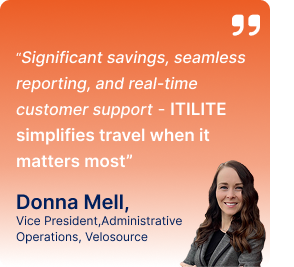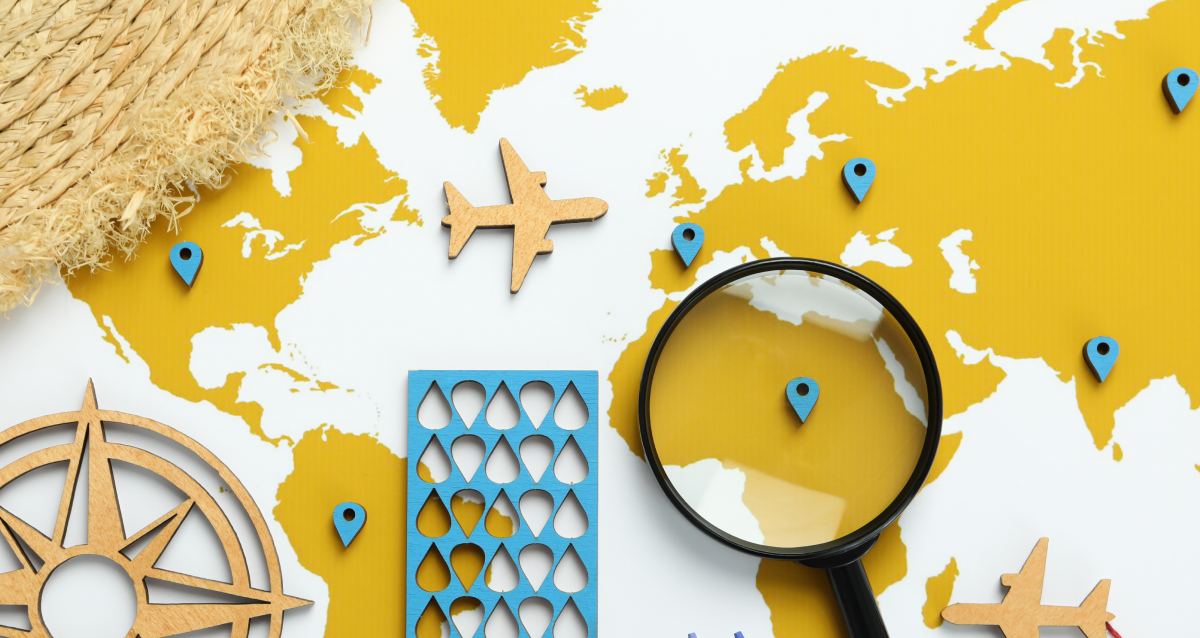
The business travel industry is a crucial part of the US economy. Every year, thousands of employees travel globally to carry out business activities. Hence, managing business travel seamlessly can be challenging for company owners and travel managers, especially if multiple employees travel to various destinations.
In order to overcome these issues, company owners can leverage reports to gain insights into travel management data which will help you identify areas of improvement and cost optimization. Through these reports, you can get data on flights, hotels, traveler preferences, expenses, etc.
If you are a company owner looking to grow your business, then mentioned below are a few ways how business travel data leads to business growth:
1. Travel Policy Compliance
Policy violations can be a major barrier for your business’s growth. They can significantly impact the organization’s bottom line and reputation. Employees violating policies can result in increased costs, legal liabilities, and damage to the company’s brand image. For instance, if an employee books travel outside the company’s preferred vendors, it can result in missed savings opportunities and higher travel expenses.
You can ensure travel policy compliance with travel management data. By creating policy violation reports for individual employees, department-wise, and employee level, hotel or flights, you can identify areas of policy violations.
By analyzing these reports, you can identify specific categories in which the employees overspent. For instance, the reports may highlight flight expenses employees have violated as per your policy. This will allow you to include more cost-effective flight options per your company’s travel policy.
Additionally, with the help of business travel data, you can identify trends and patterns in your employees’ travel. For instance, you can find out which month has the maximum number of employees traveling and why there are policy violations. This will help you understand the loopholes in your policy and implement measures for policy compliance.
2. Reduces Travel Costs
Travel costs are one of the essential parameters of business travel. Therefore, it becomes necessary for companies to optimize their business travel costs. However, with so many employees traveling frequently, tracking every employee’s expenses is difficult.
Moreover, it’s challenging to identify areas of cost leakages. Identifying areas of cost leakages becomes difficult when you have so many employees traveling simultaneously.
Hence, having detailed travel management data is vital for multiple cost-saving avenues. Travel data helps reduce costs in several ways, including:
3. Identifying Cost-Saving Opportunities
Travel management data lets you identify travel habits and patterns that help you save costs. You can get data through policy violation reports, last-minute bookings, or vendor reports. For instance, you can identify which employee continuously stays in expensive hotels. Hence, company owners can encourage them to stay in more cost-effective hotels. You can also ask them to make early bookings so there is no cost leakage due to last-minute bookings.
4. Negotiating for Better Deals
Travel data provides valuable insights into the frequency and volume of travel. This will help you negotiate better deals and discounts, especially with vendors such as airlines, hotels, or cab rental companies. Also, the real-time availability of the right travel management data can help you with the proper negotiation.
For example, negotiating with certain properties, such as AirBnBs than hotel chains, can help you grab better rates. This allows you to reduce costs, thus contributing to business growth significantly.
5. Monitoring and Controlling Travel Expenses
Travel managers can use travel data to track expenditures and ensure employees abide by travel policies and guidelines. With travel data, you can monitor compliance and reduce the risk of employees overspending or making non-compliant bookings.
Business travel partners such as ITILITE offers a virtual travel consultant that suggests where you can save more by comparing your travel data against industry benchmarks. It uses machine learning and predictive analysis to analyze employees’ spending behavior and last-minute bookings.
This gives detailed insight into the overall travel spending and helps you monitor and control travel expenses.
6. Improves Travelers’ Experience
Company owners and travel managers must ensure a good travel experience when employees go on business trips. Moreover, travelers’ experience is an essential KPI you can use to decide the effectiveness of your company’s business travel program.
Here are some ways in which business travel data can improve travelers’ travel experience:
- Personalization: One of the major benefits of travel data is the ability to personalize traveler experience. By gathering data on employees’ past trips, preferences, and travel behavior, travel managers can tailor their travel arrangements to meet their requirements. For instance, if an employee prefers staying in hotels with adequate amenities, you can book such hotels in the future.
- Online booking experience: If your company has been using an online booking system, a few employees may continue booking offline. This can be because the user experience on the online platform is unsatisfactory or due to the unavailability of a few options.
- By creating an online vs. offline booking report, you can get insights on how many employees prefer online or offline booking adoptions. This will help you fix these issues and adopt measures to improve online adoption.
- Hotel Feedback: After every business trip, you must ask business travelers to rate the hotel and the quality of their stay, along with reasons. Doing this regularly will give you an idea about the good and bad hotels. This travel data will help you blacklist all the bad hotels during future bookings.
Hence, travel management data improve travelers’ experience and helps you adopt measures that can lead to business growth.
7. Streamlines Travel Management Process
Generally, while planning a business trip, employees must browse various third-party websites to book hotels and flights. They need to do this while juggling other important office tasks. Additionally, travel managers may have to send multiple emails back and forth to keep track of all the travel bookings and expenses. This process of managing business travel is tedious and very time-consuming for both of them.
A corporate travel booking platform provides travel data in a single platform by combining flight and hotel options in a single package. Moreover, an advanced travel management platform gives you an eagle-eye view of your company’s travel data with customized reports. Since these dashboards provide real-time data, you can seamlessly manage your bookings and expenses, thus streamlining your business travel management process.
8. Enhances Travelers’ Wellness
Business travel can often be a stressful experience for your employees. Multiple factors, such as back-to-back business meetings, red-eye flights, time away from family, long layovers, etc., can overwhelm your road warriors. This, in turn, affects their overall wellness.
But how does travel management data help improve your employees’ wellness? Here are a few ways:
- Number of nights away: Employees are away from their families during a business trip. This can make it difficult for them to adjust to new routines. You can generate reports on the number of travelers vs. the night they spend traveling. Based on this, you can reduce the number of trips for certain employees..
- The difference in time zones: As employees travel to various countries, the difference in time zones can result in jet lag. Jet lag can severely impact employees’ wellness and, in turn, their performance. Hence, with the help of business travel data, you can track how frequently each employee travels across various time zones to reduce the number of jet lags.
- Red-eye flights: Sometimes, employees may have to board red-eye flights because of the lack of availability of other flights at the required time or time constraints. If your employees are boarding red-eye flights often, they can face health issues such as weight gain, high blood pressure, risks of heart attacks, and many more.
With the help of travel management data, you keep track of the number of red-eye flights for every employee on a monthly basis to keep travelers’ anxiety and fatigue at bay.
9. Contributes to Sustainable Travel
According to a report, business travel is one of the significant contributors to carbon emissions. Yet research shows that most companies aren’t taking any action to make their business travel greener. Hence, it is high time companies implement serious measures to reduce their carbon footprint and incorporate sustainability in their travel process.
You can analyze your company’s carbon footprint with the help of corporate travel data. Data from airlines, destinations, distance from one airport to another, etc., will give you the necessary information for each trip. With this information, you can calculate the greenhouse gas emissions per employee and per-trip basis. Moreover, you can also calculate your company’s overall monthly carbon emissions.
Additionally, company owners can also invest in carbon offsetting projects or incorporate a green travel policy to reduce their company’s negative environmental impact.
A few travel management companies also provide customized carbon impact reports. These reports help you calculate your company’s carbon footprint and give insights into the emission levels.
Leverage Business Travel Data and Grow your Business
With the growing business travel industry, businesses need to leverage travel management data. Business travel data helps you identify areas of cost leakages, impacts of business travel on travelers’ wellness and experience, calculate carbon footprint, travel policy compliance, and many more.
You can also partner with corporate travel management companies such as ITILITE to gain access to travel data. ITILITE gives you a 360-degree view of your company’s travel data through multiple standard and customized reports. To top it all, our virtual travel consultant ITILITE Mastermind tells you what actions to take to improve your travel program based on real-time data.
Get a free demo now to try out the advanced analytics and features!












